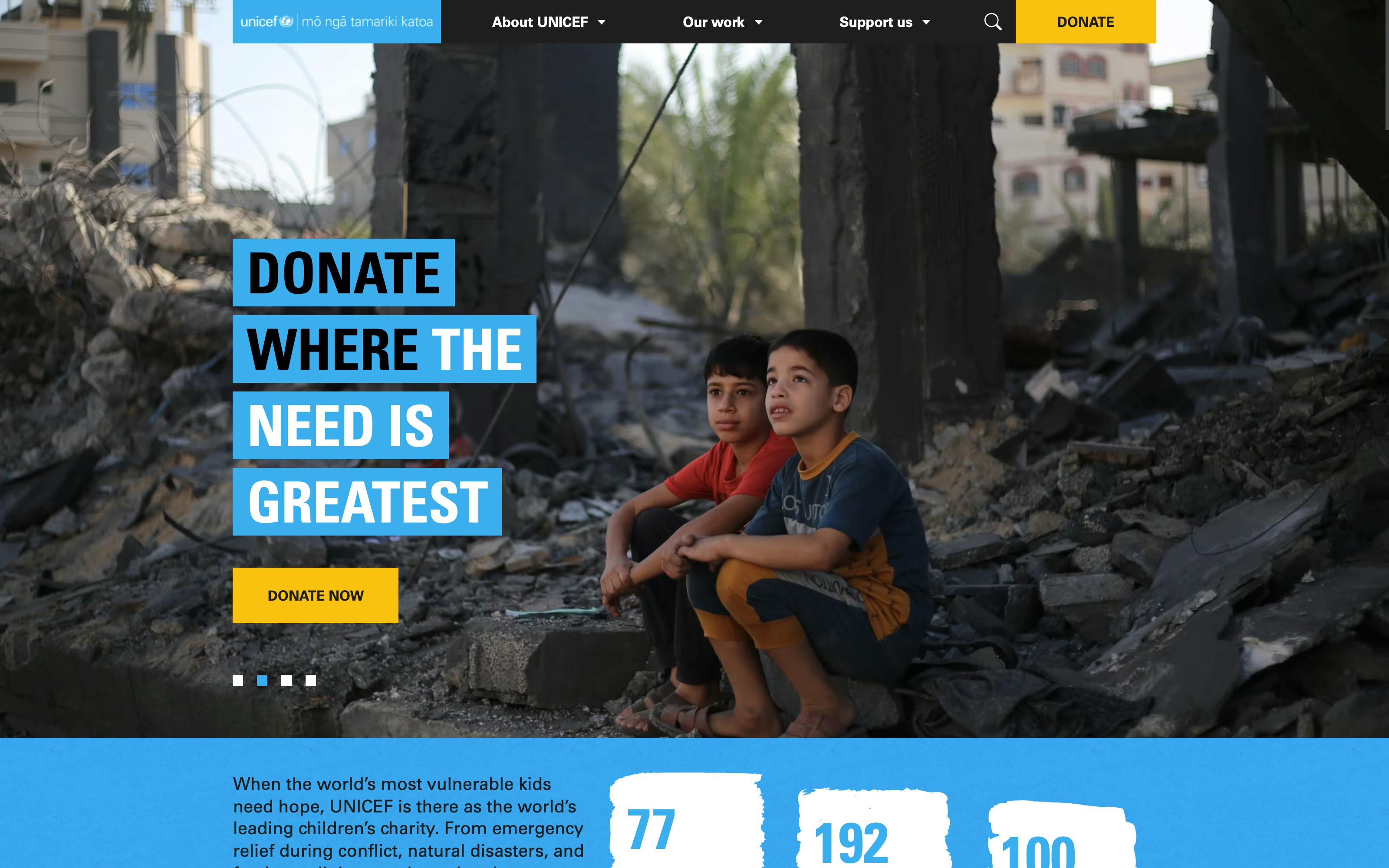UNICEF Aotearoa NZ Cuts Page Launch Time to Several Hours

Summary
- UNICEF Aotearoa is part of the global UNICEF network, raising funds and awareness to support children around the world. From disaster relief to long-term programs, their team leads national campaigns that connect New Zealanders to urgent and ongoing causes.
- They needed to launch donation campaigns faster and with less developer involvement. Using Prismic, they created reusable page sections that let marketers build pages quickly while keeping everything consistent.
- Campaigns now go live in 3 to 6 hours with minimal IT involvement. The marketing team works independently, and the website stays on brand.
The challenge: delays in getting donation campaigns live during urgent moments
When in-person fundraising reduced due to Covid restrictions, the website became UNICEF Aotearoa’s main way to reach donors. But launching new donation pages was slow and developer-dependent, a major problem during crises when speed makes a difference.
“We had a website that was heavily tech-dependent. If we wanted to make significant changes, it needed recoding.”

The marketing team couldn’t move fast or make changes without help, and brand consistency was hard to maintain when every page had to be built from scratch.
The solution: a component-based setup that gave the marketing team speed and flexibility
The team chose Prismic to help them move faster without sacrificing quality. They defined and built a library of reusable slices (or page sections) that the marketing team can mix and match to build new campaigns on their own.
These slices follow global brand guidelines and are designed to work well across screen sizes, especially mobile, where most of their traffic comes from.
“Once we had the slices built, it made sense. It locks people into a consistent design, so we’re not constantly reinventing layouts.”

The marketing team gained the autonomy to launch urgent emergency appeals in just a few hours.
“The Gaza emergency campaign went live in under six hours. The team had all the tools they needed. That’s huge for us.”

"With the Vanuatu Earthquake appeal, the campaign was up in three to four hours, without any involvement from the tech team.”

Developers also used the switch as a chance to make other improvements, hosting the site on Vercel, automating donation receipts, and connecting the site to HubSpot for smoother backend operations.
The results
- Campaigns now go live in 3 to 6 hours: What was once a complicated back and forth between IT and marketing now happens in a few hours, with no developer involvement.
- Consistent look and feel across all pages: Pages follow UNICEF’s global design system while giving the Aotearoa team space for local storytelling.
- Optimised for mobile from the start: Around 80% of visitors come from mobile. Slices make it easy to build layouts that work across devices.
- Receipts go out instantly: They used to take up to five days. Now they’re sent in less than a minute, a meaningful improvement for donor confidence.
Bonus tip from UNICEF Aotearoa
1. Focus on the real need
Going digital isn’t a fix-all. What matters is starting with the people you're serving. UNICEF Aotearoa emphasizes putting the audience at the center and understanding what they truly need, not just what you want to deliver. As Ghada Vanderpool put it, the key is asking: “What is the problem we're trying to solve?”
2. Stay authentic, especially as AI grows
As AI becomes more common in digital experiences, authenticity matters more than ever. Ghada notes that audiences are becoming more skeptical, questioning what's real and what's not. In this context, staying true to your brand voice and values builds trust.
3. Make data work for you
Start with a clear plan for how you’ll measure success. James Moore recommends knowing exactly what your data structure looks like, how you’ll use it, and how it helps improve the experience. Without a strong data foundation, it’s hard to improve or prove impact.
4. Build from your brand and keep it simple
Before diving into tools or design, get your brand fundamentals in place. Define your identity, research the key journeys users should take, and keep things straightforward, especially for mobile, which is where most people will experience your site. James summed it up best: “Start with your brand definition and build from there. Keep it simple.”
Ghada adds that investing time upfront, gathering brand guidelines, page types, and user journeys, will save time later and help your team move faster with confidence.
What’s next for UNICEF Aotearoa
UNICEF Aotearoa is continuing to evolve and they’ve chosen a platform that can grow with them. With a flexible, marketer-friendly setup in place, their team is now focused on what’s next:
- Improving data accuracy across web, social, and CRM systems
- Launching a donor portal for more personalized engagement
- Investing in search engine optimization and user experience